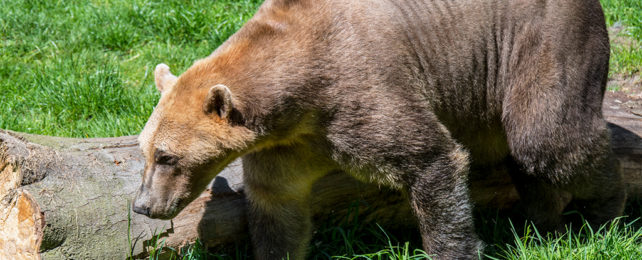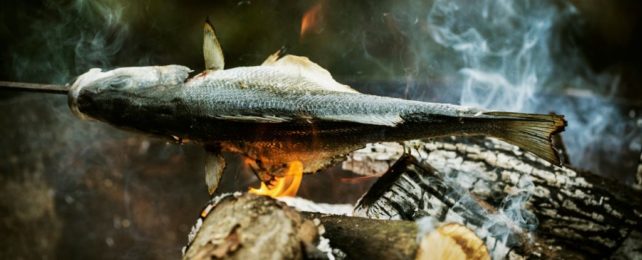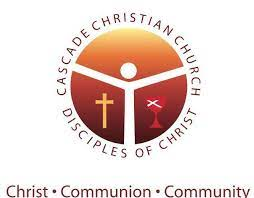The recent evolution of a possibly new species being names "Brolars" and "Pizzilies" never ceases to amaze me when describing a biological process always in motion. In this case, the possible evolution between the specialized polar bear species and several nearby species of Canadian Brown bears, North American Grizzlies, and Kodiak Brown bears (found on Kodiak Island, Alaska).
Whether the evolutionary change becomes permanent or not is left to be seen as evolution requires a lot of time to change over to a "semi-permanent" state. Here, amongst the North American bear population, evolution required about 500,000-600,000 years to occur.
Similarly, humanity is currently interbreeding amongst itself over the past 50,000 years. More so now, as the population grows in density and mobility (famine, droughts, war, etc). In fact, the modern human species has been changing over the past 150,000-250,000 years even though the species itself is 2,000,000 years old since diverging from the ape family. That is, it has taken that long for the paleo-human subspecies to find it's last iteration in the line of "homo sapiens." Before us where many different stages of human-like, bi-pedal, non-ape species. Homo Sapiens - or, modern man - is its most recent development.
 |
CreditJOHN BAVARO FINE ART / SCIENCE PHOTO LIBRARY | CaptionAustralopithecine species. Illustration of several species of Australopithecines, or Homininians, in the genera Ardipithecus, Paranthropus, Australopithecus and Homo. Australopithecines include modern humans (Homo sapiens) and their close relatives. For a version of this image without the labels see C049/0083. |
The science of evolution is best understood as a science of processual evolution even as the universe itself processually proceeds within itself from event to event. A good Christian theology must include in its teachings these ideas even as they relate to a processual theological understanding of God and creation.
The classical, Greek/Plato/Hellenized teaching of God has delimited God for far too long in defunct philosophies of the world and cosmos. And during that time has infilled it's traditional non-processual teachings with un-God like qualities more oriented to our own sin and cruelty claiming these are God's characteristics - sic, essences - as well. But they are not.
God is love. God is neither cruel or evil. When ridding Platonism from Western Theology and subsequently adding a God of love to the equation - not as a peripheral descriptor but as an essential divine descriptor - we get a better, more translucent form of Christianity arising and being described as a Processual Christianity. Or, a Process Theology.
A Christianity which sees God as amipotent (v. omnipotent; ami=friend/lover; potent=power), a loving power who is generatively sovereign in cooperative partnership with creation (including man), without requiring definitive outcomes but all possible outcomes based upon God's valuative imputation of God's energies, thoughts, and actions into receptive creational elements yearning for a relationship between itself and the divine-creational/human cooperative.
"An amipotent God is active, but not a dictator. Amipotence is receptive but not overwhelmed. God engages without domineering; is generous but not pushy; and invites without monopolizing. Amipotence is divine strength working positively at all times and places. The power of an amipotent God is the power of love." - Thomas Jay Oord, Open and Relational Theology: An Introduction to Life-Changing Ideas
Processual Christianity builds upon AN Whitehead's Process and Reality philosophy which spun off a subset process fields known as processual theology, science, technologies, societies (especially eco-societies), communities, literature, and socio-political interactions.
Process is everywhere around us as it is how the universe moves and has it's being. This is what Whitehead had observed along with many other philosophers and religionists before him back to antiquities. Whitehead's metaphysic of creational cosmology is best described as highly open, experiential, panpsychic as well as physical, interactive, organic, and relational, among other adjectives.
Process philosophy and theology may be summed up as pancreational, panrelational, panexperiential, and panpsychic. Which means creation is highly interactive with itself in all its many natures, dimensions, and states of being. It further means that the future is always open and changing, always dynamic, and always evolving.
As its Creator, God is ever God in God's-Self. More concisely, God is a process God. How God moves and Is may aptly described a God of processual quality, essence, character, and Being. What does this mean?
That God is not impassable as traditional Christianity has taught (save in who God is as Loving Other et al) but highly passable in God's relationship with creation. That God is always highly experiencing a deep, relational communion, energy, and pan-essence throughout creation's energies and movements.
A qualitatively processual God is also NOT directing creation's future nor its immediate or long-term direction but is a God who is a deep, deep part of creation's future and direction. That is God doesn't need to direct creation's future as God is a PART of creation's being and subtending future to become it's truer self beyond the dichotomy of sin and evil inhabiting it's initial freewill beingness. But because God is also Other-than-creation, or Apart from creation as God, both the theistic and pantheistic pictures of relation fall apart. A process God must have a newer relation with creation, that of pan-en-theism, or pantheistic relation with creation as illustrated below.
It should be observed that those competing theologies which are non-processual will have many arguments which seem sound and wise. Having examined Whitehead through the writings of John Cobb and other process theologians, many, if not all, of those arguments fail when not perceiving the comprehensiveness of process theology. From the diagram three things stand out: 1) God is in a cooperating/partnering relationship with the cosmos; 2) panentheism is aptly described as process-RELATIONAL state of beingness; and, 3) like God, creation is always in a state of creativity which means that the idealized future of permanency is not true. Rather, the future is exactly like our processual present ever changing, morphing, adapting, renewing, reclaiming, etc.
Continuing, the reason for God's panessence in creation is firstly because God birthed creation out of God's own DNA resulting in a generative, valuative, open creational teleology. And secondly because God's Otherness has been imputed INTO creation so that even the very "birthing" edges of evolutionary creation is filled with God's Self.
Process theology also emphases a processual-relational, nurturing-nourishing, and loving presence, or deep intrinsic immanence, of God with creation. The big story here then is of process theology's inherent DIFFERENCE to classical or traditional Christianity's Wholly-Other God who lives far, far away, and above us (like the Greek gods) always disapproving of our existence. It further teaches that God loves us when we receive God's love through Christ's atonement. Which is not denied but a process theology wishes to alter these past teachings of transcendency and disapproval by expanding away from it more broadly more deeply in this theology of Divine expiation beginning with who God is. Is God a God who loves or a God who loves and hates?
Traditional Christianity teaches of a God who loves and hates. However, this is NOT the God of Process Christianity. It is the idol of the traditional church which has been raised up like Aaron's rod to dis-spell the biting snakes of the wastelands present amongst Israel's 40 year wilderness journeys from Egypt as it moved in-and-about the lands of Palestine.
Processual Christianity says that though God is Other, is transcendent, is many things creation is not, that God in God's primary relationship to us, and creation, is WITH us. That God is immanently near to us. That God is here and present with creation from moment-to-moment experiencing with us our griefs and anguish, harms and failings, joys, and hopes, and sufferings.
The story isn't in what God can do to prevent the sins and evils we bear in this world but to be there with us in its deepest agonies and greatest joys, helping where God can help as circumstances allow. The promises of God are built on God's presence with us; on God's ami-power to help us endure life's woes and evils; to "save" us both IN this present life as will as IN death unto Love's greater endurance beyond the realms of sin and death.
A process theology then is a theology of God who ABIDES with us always and not sometimes, or maybe, or when we're not doing evil, or even if we don't love God or believe in God. God is love and God is present.
Further, God's greatest joy is seeing creation displaying love in its many splendors against those days and times of unlove, hate, and passion darkly directed by willful creatures such as mankind.
Process bespeaks goodness and generative energy. Western theologies bespeak many things about God but many of which are not true. It uses the bible just as process theologians do but in ways different from process theology. The 2000 year hold of classical Greek-Hellenistic theology, or Platonic thought, the early Enlightenment science philosophies, or even modern day Catholic scholasticisms must be let go and be allowed to be infilled with processual life, vision, hope, and beingness. However, the better path of deconstruction is to depart these teachigs altogether and expand upwards, lifting your theology to a higher plane of insight and experience.
For further interaction with process philosophy and teaching locate appropriate articles in the topics and Index lists to the right.
Blessings,
R.E. Slater
November 18, 2022
* * * * * *
Process Theology - God As a Verb:
An Introduction 08.01.2021
What if God is not a person or a personality at all? What if God is not all-powerful? What if God is not all good? What if all those ideas are the inventions from the Middle Ages, and nothing what Jesus or the writers of the Bible had in mind? What if God is a process - one that you and I participate in, one that seeks peace and liberation for all? During this Sunday service we explore Process Theology, a newer, more complex approach to religious belief that evolved in concert with quantum physics. Led by Worship Associate, Elizabeth Gemelli and guest sermon by Rev. Susanne Intriligator.
Introduction of Speaker - approx 9:30 min
Teaching - approx 11:00 min
* * * * * *
 |
| Rare hybrid between a polar bear and brown bear. (Philippe Clement/Getty Images) |
Hybrid 'Brolar Bears' Could Spread
Through The Arctic as The Planet Warms
in NATURE | November 7, 2022
Earth's largest land predators are increasingly crossing paths with brown bears at higher latitudes, bringing hybrid 'brolar bears' into the Arctic.
In 2006, a hunter in the Canadian Arctic shot a bear that didn't look like the others. DNA testing would later confirm the animal was actually part grizzly, part polar bear.
In the years since, 'pizzlies' or 'brolar bears' have popped up more and more in North America, and now researchers in Siberia are warning the same could happen elsewhere in the icy north.
"Brown bears are moving into the tundra. Brown bears have been seen in the lower reaches of the Kolyma River, where polar bears live," Innokentiy Okhlopkov, a researcher at the Siberian branch of the Russian Academy of Sciences told TASS, a Russian news agency.
"Brown bears have been seen, for example, in the Anabar District [of Yakutia, Russia]. It is likely that in the future there will be hybrids of polar and brown bears."
Polar bears and brown bears only diverged from one another around 500,000 years ago. Though uncommon, mating between the two can occasionally result in fertile offspring.
As climate change intensifies, revealing new lands and food sources, these rate events could become more common as brown bears move northwards and cross paths with polar bears more frequently. Similarly, melting sea ice forces polar bears inland, again making encounters between the two more likely.
Already, locals in some parts of Russia have noticed the two species frequenting the same places. In the Yakutia region of Siberia there are two polar bear populations that could possibly breed with brown bears.
Some studies estimate polar bears could be close to extinction by 2100, save for a few lonely subpopulations in the highest reaches of the Arctic. And if enough of them interbreed with brown bears, the pure species could disappear even sooner.
Polar bear numbers are already expected to plummet as sea ice melts, but experts are now worried that any remaining individuals will see their genetics diluted by hybridization.
In fact, that's already happening as you're reading this. In 2010, researchers in North America actually found a brolar bear whose mother was a hybrid and whose father was a brown bear.
Unlike polar bears, which mostly feed on blubber and meat, brown bears have a super varied diet. They will eat just about anything they can get their paws on, which means these are likely to better cope with any environmental changes that might come in the future.
Polar bears are not nearly so adaptable, but perhaps new genes from brown bears could help the species survive in the Arctic.
If that's the case, polar bears may still exist in the decades to come, but they'll never be quite the same as before.
One day, they could even represent an entirely new species.
* * * * * *
 |
| (Mint Images/Getty Images) |
And now for the rest of the story...
"Cooked Fish Anyone?"
At an archaeological site called Gesher Benot Ya'aqov, the remains of ancient carp-like fish show signs of having been carefully heated 780,000 years ago. The discovery is not the oldest evidence of the controlled use of fire by early humans, but it is the oldest evidence in Eurasia. In Africa, Homo erectus sites dating back at least 1.5 million years contain charcoal and burnt bones. In fact, signs of cooking don't really show up in the archaeological record until long after the arrival of Neanderthals and Homo sapiens. Until recently, the oldest evidence of cooking was the heated remains of starchy plants found in an underground oven in Africa. And that site only dates back 170,000 years. That's 600,000 years after early humans in Israel were cooking fish in a valley near the Dead Sea!
The Oldest Evidence of Ancient Humans
Cooking With Fire Was Just Found
HUMANS, 15 November 2022
What sets humans apart from other animals? It's a burning question that some scientists say boils down to the fine control of one earthly force: fire.
The British primatologist Richard W. Wrangham is a big proponent of the so-called 'cooking hypothesis'. Today, there is no known human population that lives without cooking, which suggests it is a powerful and necessary skill.
Wrangham argues that the evolutionary shift from raw to cooked food was the "transformative moment" that fueled the bellies of early humans and allowed their brains to grow, giving rise to our genus and ultimately our species.
A new discovery in Israel makes that idea even more digestible.
An international team of scientists working in the northern sector of the Dead Sea claims to have found the earliest signs of cooking by prehistoric humans.
At an archaeological site called Gesher Benot Ya'aqov, the remains of ancient carp-like fish show signs of having been carefully heated 780,000 years ago.
The discovery is not the oldest evidence of the controlled use of fire by early humans, but it is the oldest evidence in Eurasia. In Africa, Homo erectus sites dating back at least 1.5 million years contain charcoal and burnt bones.
Yet these are only circumstantial signs of burning, not clear signs of cooking. Evidence of the latter is much harder to come by.
In fact, signs of cooking don't really show up in the archaeological record until long after the arrival of Neanderthals and Homo sapiens. Until recently, the oldest evidence of cooking was the heated remains of starchy plants found in an underground oven in Africa. And that site only dates back 170,000 years.
That's 600,000 years after early humans in Israel were cooking fish in a valley near the Dead Sea.
"We do not know exactly how the fish were cooked but given the lack of evidence of exposure to high temperatures, it is clear that they were not cooked directly in fire, and were not thrown into a fire as waste or as material for burning," says archaeologist Jens Najorka of the Natural History Museum in London.
The team's recent analysis suggests the teeth of ancient freshwater fish found at the site were caught at a nearby lake, no longer in existence, and exposed to suitable temperatures for cooking.
The findings push back our ancestors' control of fire to the mid-Pleistocene, a time when populations of Homo erectus were giving way to bigger-brained hominins, like Homo heidelbergensis.
"Gaining the skill required to cook food marks a significant evolutionary advance, as it provided an additional means for making optimal use of available food resources," explains archaeologist Naama Goren-Inbar from the Hebrew University of Jerusalem.
"It is even possible that cooking was not limited to fish, but also included various types of animals and plants."
Gesher Benot Ya'aqob is a site rich in the remains of ancient hominins. Archaeologists have found evidence of flint, basalt, and limestone tools here, as well as fruits, nuts, seeds, and many species of land mammals, both medium and large.
Whoever lived in this valley clearly knew the land well. But it was their understanding of freshwater habitats that researchers think allowed this population to really thrive.
It might have even helped humans leave the African continent and live elsewhere. By jumping from freshwater habitat to freshwater habitat, hominins could ensure they had a good supply of fresh water and nutrient-rich foods.
Scientists have argued for years now that eating fish rich in omega fatty acids, zinc, and other crucial nutrients is what allowed the human brain to evolve such great complexity.
Raw fish probably suited the earliest hominins just fine, but as cooked fish made its way into our ancestors' diet, it would have made digestion easier and saved people from consuming dangerous pathogens. It would have also given hominin brains a bigger boost of nutrients.
The fish fried in Israel may have just been the start of our humanity's culinary prowess.
"This study provides evidence of fish cooking by early hominid … emphasizing the role of wetland habitats in offering a stable, year-round source of food that played an important role in hominin subsistence and dispersal across the Old World," the authors conclude.
The study was published in Nature Ecology and Evolution.




































